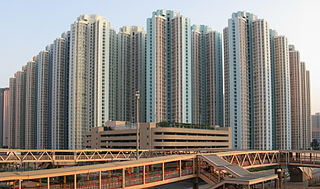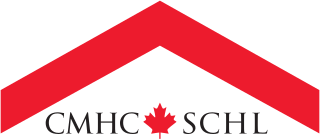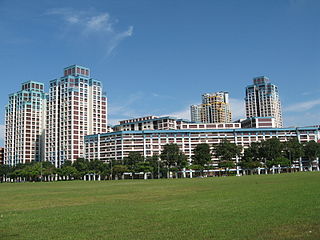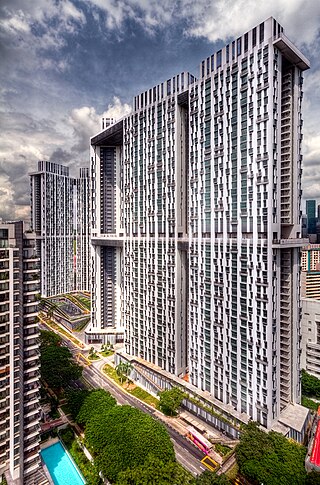Related Research Articles

The Housing & Development Board, is a statutory board under the Ministry of National Development responsible for the public housing in Singapore. Established in 1960 as a result of efforts in the late 1950s to set up an authority to take over the Singapore Improvement Trust's (SIT) public housing responsibilities, the HDB focused on the construction of emergency housing and the resettlement of kampong residents into public housing in the first few years of its existence.

An FHA insured loan is a US Federal Housing Administration mortgage insurance backed mortgage loan that is provided by an FHA-approved lender. FHA mortgage insurance protects lenders against losses. They have historically allowed lower-income Americans to borrow money to purchase a home that they would not otherwise be able to afford. Because this type of loan is more geared towards new house owners than real estate investors, FHA loans are different from conventional loans in the sense that the house must be owner-occupant for at least a year. Since loans with lower down-payments usually involve more risk to the lender, the home-buyer must pay a two-part mortgage insurance that involves a one-time bulk payment and a monthly payment to compensate for the increased risk. Frequently, individuals "refinance" or replace their FHA loan to remove their monthly mortgage insurance premium. Removing mortgage insurance premium by paying down the loan has become more difficult with FHA loans as of 2013.

The Home Ownership Scheme (HOS) is a subsidised-sale public housing programme managed by the Hong Kong Housing Authority. It was instituted in the late 1970s as part of the government policy for public housing with two aims – to encourage better-off tenants of rental flats to vacate those flats for re-allocation to families in greater housing need; and also to provide an opportunity for home ownership to families unable to afford to buy in the private sector.

Canada Mortgage and Housing Corporation is Canada's federal crown corporation responsible for administering the National Housing Act, with the mandate to improve housing by living conditions in the country.

The Central Provident Fund Board (CPFB), commonly known as the CPF Board or simply the Central Provident Fund (CPF), is a compulsory comprehensive savings and pension plan for working Singaporeans and permanent residents primarily to fund their retirement, healthcare, education and housing needs in Singapore.

Public housing in Hong Kong is a set of mass housing programmes through which the Government of Hong Kong provides affordable housing for lower-income residents. It is a major component of housing in Hong Kong, with nearly half of the population now residing in some form of public housing. The public housing policy dates to 1954, after a fire in Shek Kip Mei destroyed thousands of shanty homes and prompted the government to begin constructing homes for the poor.

Build to order (BTO) is a real estate development scheme enacted by the Housing and Development Board (HDB), a statutory board responsible for Singapore's public housing. First introduced in 2001, it consists of a flat allocation system that offers flexibility in timing and location for owners buying new public housing residences in the country.
Mortgage insurance is an insurance policy which compensates lenders or investors in mortgage-backed securities for losses due to the default of a mortgage loan. Mortgage insurance can be either public or private depending upon the insurer. The policy is also known as a mortgage indemnity guarantee (MIG), particularly in the UK.
A first-time home buyer grant (or first home owners grant) is a grant specifically for/targeted at those buying their first home – perhaps a starter home. Like other grants, the first-time buyer does not hold an obligation to repay the grant. In this respect, it differs from a loan and does not incur debt or interest. Grants can be given out by foundations and governments. Grants to individuals can be a cash subsidy.

Public housing in Singapore is subsidised, built and managed by the Government of Singapore. Starting in the 1930s, the country's first public housing was built by the Singapore Improvement Trust (SIT) in a similar fashion to contemporaneous British public housing projects, and housing for the resettlement of squatters was built from the late 1950s. In the 1960s, under the SIT's successor the Housing and Development Board (HDB), public housing consisting of small units with basic amenities was constructed as quickly and cheaply as possible at high densities, and was used for resettlement schemes. From the late 1960s, housing programmes focused more on quality, public housing was built in new towns, and a scheme allowing residents to lease their flats was introduced. Throughout the 1970s and 1980s, more public housing options were provided for the middle class and efforts to increase community cohesion within housing estates were made. From the 1990s, the government began portraying public housing as an asset, introducing large-scale upgrading schemes and loosening regulations on the resale of public housing while additional housing programmes for the sandwich classes and elderly residents were introduced. Rising housing prices led to public housing being seen as an investment from the 2000s, and new technologies and eco-friendly features were incorporated into housing estates.

Turkish nationality law is based primarily on the principle of jus sanguinis. Children who are born to a Turkish mother or a Turkish father are Turkish citizens from birth. The intention to renounce Turkish citizenship is submitted in Turkey by a petition to the highest administrative official in the concerned person's place of residence, and when overseas to the Turkish consulate. Documents processed by these authorities are forwarded to the Ministry of Interior (Turkey) for appropriate action.

The Third Labour Government of New Zealand was the government of New Zealand from 1972 to 1975. During its time in office, it carried out a wide range of reforms in areas such as overseas trade, farming, public works, energy generation, local government, health, the arts, sport and recreation, regional development, environmental protection, education, housing, and social welfare. Māori also benefited from revisions to the laws relating to land, together with a significant increase in a Māori and Island Affairs building programme. In addition, the government encouraged biculturalism and a sense of New Zealand identity. However, the government damaged relations between Pākehā and Pasifika New Zealanders by instituting the Dawn Raids on alleged overstayers from the Pacific Islands; the raids have been described as "the most blatantly racist attack on Pacific peoples by the New Zealand government in New Zealand’s history". The government lasted for one term before being defeated a year after the death of its popular leader, Norman Kirk.
AHG may refer to:
The Home Improvement Programme (HIP) is a programme announced by HDB, during the National Day Rally in August 2007 that replaced the Main Upgrading Programme (MUP). The HIP offers lessees a choice on the works they want to be included in the upgrading of their flats. It also helps lessees deal with common maintenance problems in ageing flats, such as spalling concrete and ceiling leaks, in a systematic and comprehensive manner. Flats are eligible for HIP twice, one at 30 years old and one at 60-70 years old. The HIP is targeted at flats built til 1997. Priority of upgrading programmes is traditionally given to wards held by the ruling People's Action Party, which appoints the Minister for National Development who oversees the Housing Development Board. When asked why opposition wards are penalised by the statutory board at a NUS student forum in 2011, Prime Minister Lee Hsien Loong responded, "The answer is that there has to be a distinction. Because the PAP wards supported the Government and the policies which delivered these good things.”

The Pinnacle@Duxton is a 50-storey residential development in Singapore 's city center, next to the business district. All seven connected towers are collectively the world's tallest public residential buildings, and featuring the two longest sky gardens ever built on skyscrapers, at 500m each.
My Home Purchase Plan is one of the public housing initiatives of Hong Kong. This plan enables eligible citizens to purchase homes by way of "rent-and-buy". The Plan aims to provide assistance to potential sandwich class home buyers who are able to repay mortgages in the long term but currently do not have enough savings for the down payment. This plan is introduced by the Chief Executive of Hong Kong in the Policy address of Hong Kong 2010. The implementation of plan, that is the first 5000 flats under the plan is expected to be ready for sell in 2014.

A USDA Home Loan from the USDA loan program, also known as the USDA Rural Development Guaranteed Housing Loan Program, is a mortgage loan offered to rural property owners by the United States Department of Agriculture, Rural Development.
Cash-Over-Valuation, or COV for short as it is commonly known in Singapore, was a prevalent feature in the resale market for HDB flats in Singapore for years until it was reviewed on 10 March 2014.

Permanent resident in Singapore is an immigration status in Singapore, second only to Singapore citizens in terms of privilege enjoyed. Singapore Permanent Resident (PR) have most of the rights, privileges, obligations, and responsibilities that citizens do, including National Service (NS) obligations and compulsory Central Provident Fund (CPF) contributions. Notable exceptions include not being able to vote or to hold public office, more limited public benefits such as medical and housing benefits, lower public school placement priority, and some limits on driving for transport services.

The reserves of the Government of Singapore is a collection of assets, after subtracting for liabilities, owned by the Government of Singapore and the entities listed in the fifth schedule of the Constitution, such as the Central Provident Fund (CPF), Housing and Development Board (HDB) and Temasek Holdings amongst others. This also includes the Official Foreign Reserves (OFR) accumulated by the Monetary Authority of Singapore (MAS) and the assets managed by GIC Private Limited (GIC). Liabilities held by the Government include MAS-issued bonds such as Singapore Government Securities (SGS) and Government-issued Special Singapore Government Securities (SSGS) that are exclusively purchased by CPF with monies from CPF account holders.
References
- ↑ HDB InfoWeb (6 February 2009) Archived February 21, 2009, at the Wayback Machine - Enhanced Additional CPF Housing Grant will help more own a home. Retrieved February 20, 2009
- ↑ HDB InfoWeb (14 October 2011) Archived November 24, 2011, at the Wayback Machine - Additional CPF Housing Grant. Retrieved October 14, 2011
